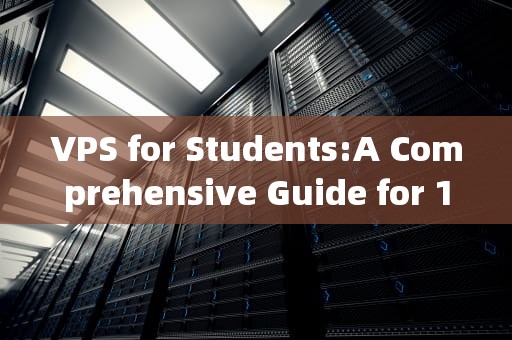本文目录导读:

In today's digital age, having your own virtual private server (VPS) can be a game-changer for students. With the rise of affordable cloud services, it's now easier than ever for students to set up their own VPS. Whether you're a student starting your first business, working on a project, or simply looking to gain more control over your online presence, a VPS offers unparalleled flexibility and power. This guide will walk you through everything you need to know about VPS hosting for students, including setup, security, and best practices.
A virtual private server (VPS) is a remote server that you can access over the internet. Unlike a dedicated server, which is solely for one business, a VPS allows multiple users to access the same server simultaneously. For students, a VPS is a cost-effective way to host your own websites, applications, or even a small online business.
Setting up a VPS for the first time can seem intimidating, but with the right guidance and tools, it's a manageable process. Below are the steps to get started:
There are several VPS providers catering to students and small businesses. Some popular options include:
For this guide, we'll use AWS as an example, as it is widely recognized and offers robust features.
Most VPS providers offer student discounts or introductory deals. Visit the provider's website and sign up using a valid student ID or affiliate code. Make sure to choose a plan that fits your budget and needs.
Once your account is approved, you'll receive an email with login credentials. Click on the link to access your VPS.
VPS providers typically offer pre-installed operating systems like Ubuntu or CentOS. Follow the installation guide provided by your provider.
After the OS is installed, you'll need to install web servers, databases, and other necessary software. For web hosting, Apache or Nginx are commonly used.
Configure your VPS settings, including DNS names, firewall rules, and access controls. Set up your web server to serve your websites and applications.
Register a domain name that reflects your business or project. Use your VPS as the server to host the domain.
Once everything is set up, test your VPS by accessing it from your web browser. Ensure that your websites and applications are running smoothly.
Security is a top priority when hosting your own VPS. Here are some essential security measures to keep your server safe:
Ensure your firewall is enabled and configured to allow traffic from your VPS. This protects your server from unauthorized access.
SSH (Secure Shell) is a secure way to access your VPS. Enable SSH and configure it to allow remote connections.
Create strong, unique passwords for all accounts on your VPS. Use a password manager to keep track of them.
Keep your operating system and software updated to protect against vulnerabilities. Regular updates are crucial for maintaining security.
If you're hosting websites for minors, enable web filtering to block inappropriate content.
Regularly back up your data to an external storage device or a cloud service. Avoid using your VPS as a backup storage.
Use tools like firewalls, intrusion detection systems, and antivirus software to monitor your VPS for potential threats.
As a student, you might encounter some common issues when setting up and managing your VPS. Below are some frequently asked questions and their answers:
A: Ensure your firewall is enabled and configured to allow traffic from your VPS. Check your firewall rules to make sure they're not blocking incoming connections.
A: Check your DNS settings to ensure they're pointing to your VPS. If you're using a custom domain, make sure it's registered and properly configured.
A: Optimize your server settings, install a caching proxy like PHP-FPM, and ensure your internet connection is stable.
A: Check your logs regularly to identify and fix any issues. If you're unsure how to resolve a problem, consult the VPS provider's documentation or contact their support team.
To make the most of your VPS, follow these best practices:
Before setting up your VPS, plan your server resources. Determine how many websites or applications you'll host and allocate sufficient resources.
Avoid overcomplicating your server setup. Start with a minimal configuration and add features as needed.
Perform routine maintenance tasks like backups, log cleaning, and system optimization to keep your VPS running smoothly.
Take advantage of the wealth of online resources, tutorials, and documentation available to learn more about VPS hosting.
Setting up a VPS can be a valuable experience for students, offering flexibility, independence, and cost savings. By following the steps outlined in this guide and adhering to best practices, you can successfully manage your VPS and make the most of its capabilities. Remember, setting up a VPS is just the first step. As you grow your business or project, you can expand your VPS resources to meet your needs. Happy hosting!
随着互联网的普及和信息技术的飞速发展台湾vps云服务器邮件,电子邮件已经成为企业和个人日常沟通的重要工具。然而,传统的邮件服务在安全性、稳定性和可扩展性方面存在一定的局限性。为台湾vps云服务器邮件了满足用户对高效、安全、稳定的邮件服务的需求,台湾VPS云服务器邮件服务应运而生。本文将对台湾VPS云服务器邮件服务进行详细介绍,分析其优势和应用案例,并为用户提供如何选择合适的台湾VPS云服务器邮件服务的参考建议。

工作时间:8:00-18:00
电子邮件
1968656499@qq.com
扫码二维码
获取最新动态
